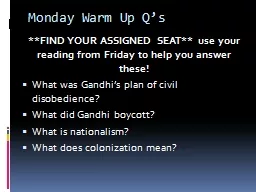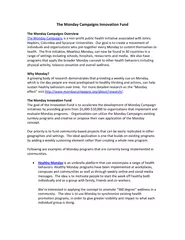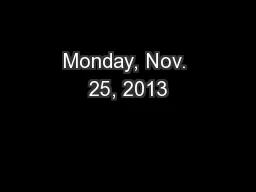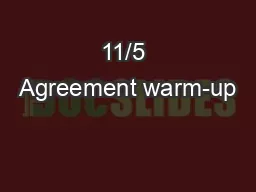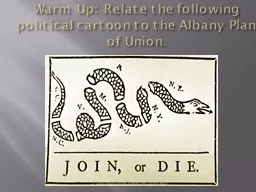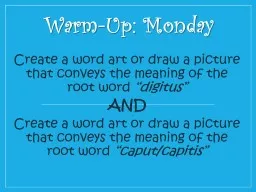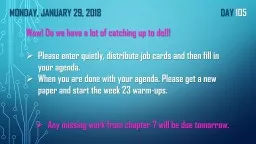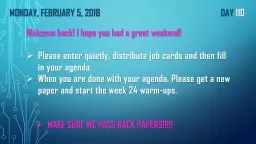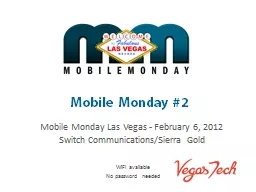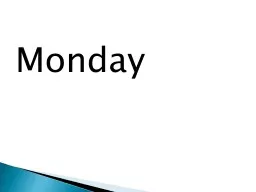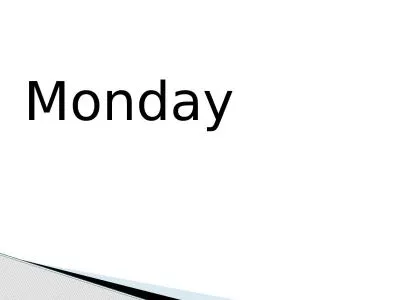PPT-Monday Warm Up Q’s
Author : jane-oiler | Published Date : 2016-05-12
FIND YOUR ASSIGNED SEAT use your reading from Friday to help you answer these What was Gandhis plan of civil disobedience What did Gandhi boycott What is nationalism
Presentation Embed Code
Download Presentation
Download Presentation The PPT/PDF document "Monday Warm Up Q’s" is the property of its rightful owner. Permission is granted to download and print the materials on this website for personal, non-commercial use only, and to display it on your personal computer provided you do not modify the materials and that you retain all copyright notices contained in the materials. By downloading content from our website, you accept the terms of this agreement.
Monday Warm Up Q’s: Transcript
Download Rules Of Document
"Monday Warm Up Q’s"The content belongs to its owner. You may download and print it for personal use, without modification, and keep all copyright notices. By downloading, you agree to these terms.
Related Documents

